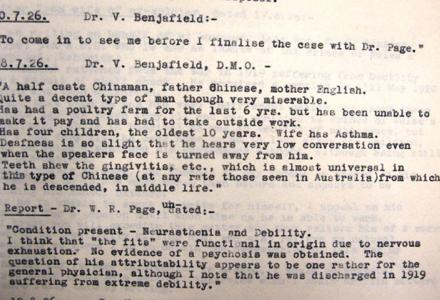Leading Seaman Gordon Corbould was the first and only son of Ernst and Alice Corbould of Epping, New South Wales. He served on the AE1, Australia’s first submarine, and took part in the capture of German New Guinea in Australia’s first military engagement of the Great War.
Gordon was not much more than a boy when he first went to sea. His baby cheeks, soft features and deep brown eyes look back at you from one surviving photograph. Gordon travelled in the company of thirty-four other submariners, some, like him, from humble backgrounds in Australia, eighteen from the United Kingdom (seconded by the British Navy) and two, Able Seamen Reardon and Woodland, from New Zealand.
On 14 September 1914 the AE1 went out on patrol and nothing was heard from the ship again. For almost a century no one knew what had happened to her and her crew. The thirty-five men of the AE1 left 17 widows behind them, and over thirty children. With the loss of a single vessel all these families lost their sole means of support.
Many of the unmarried men had also provided for their families. James Fettes, a mechanic who worked in the ill-fated vessel’s engine room, regularly sent his mother most of his pay. With a father who was sixty-two years of age and ‘practically an invalid’, three sisters (one ‘an imbecile’, another sickly and a third earning less ten shillings a week), James was the family’s principal source of support.
The same was true of Gordon Corbould. The Rector of St Alban’s Anglican Church in Epping, told Naval authorities that Gordon’s father had deserted his mother and sent nothing towards the family’s upkeep. ‘[Alice’s] only son lost on the submarine was her sole support.’ The sinking of a ship with the loss of all hands was not a tragedy confined to itself, it left a great surge of hardship and suffering in its wake.
In time, the families received some assistance. The men of HMAS Australia took up a collection (it was a Naval tradition to do so) and the lost men’s pensions were granted to their next-of-kin. But the money was never equal to the cost of raising a family; emotionally vulnerable, the young widows and aging mothers struggled with financial worry as well.
Not all the families of the AE1’s crew were left wanting. The submarine’s commander was a senior officer in the Royal Navy. His kit, left behind on the AE1’s storeship, included riding crop and opera hat, golf clubs, camera, twenty-five volumes of books and a silver whisky flask. Lieutenant Commander Besant’s kit and his frock coats and masonic regalia were shipped home in four separate cases to his family in England. Only one parcel of clothing was sent to Alice Corbould, and it lay forgotten for weeks on a railway platform in Epping.
Gordon Corbould may have come from a poor and broken family, but even the most desperate families felt the need to grieve. Every September, despite the expense, the Corboulds placed an obituary for Gordon in the Sydney Morning Herald. The first appears on the anniversary of the AE1’s loss: ‘In loving memory of Gordon Corbould and his comrades … Asleep in the Deep.’ The last was published in 1954, forty years after Gordon vanished.
Gordon Corbould’s story reminds us of the trials of bereaved families were financial as much as they were emotional. And it alerts us to the failure to provide for servicemen’s dependents, especially in the early stages of the war. It also reveals that the families of seamen, like the families of the missing, shouldered the additional burden of an inconclusive death. The final resting place of the AE1 was not discovered until 2017. As each wreck is considered a war grave, no attempt was made to recover any bodies that might remain.
For full attribution of sources, suggestions for further reading and an extended version of the story itself see ‘Asleep in the deep: Gordon Corbould’ in Bruce Scates, Rebecca Wheatley and Laura James, World War One: A History in 100 stories (Melbourne, Penguin/Viking, 2015) pp. 184-185; 359.



